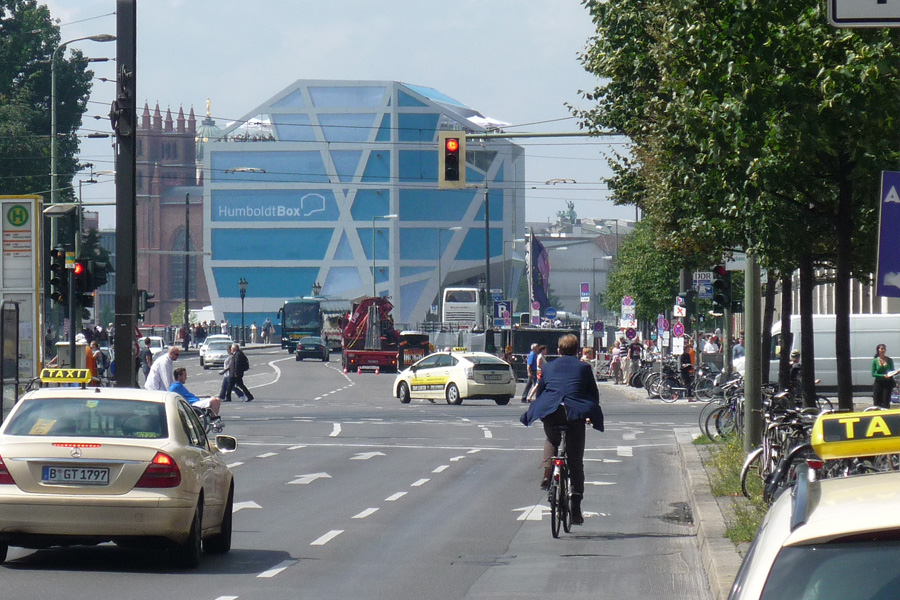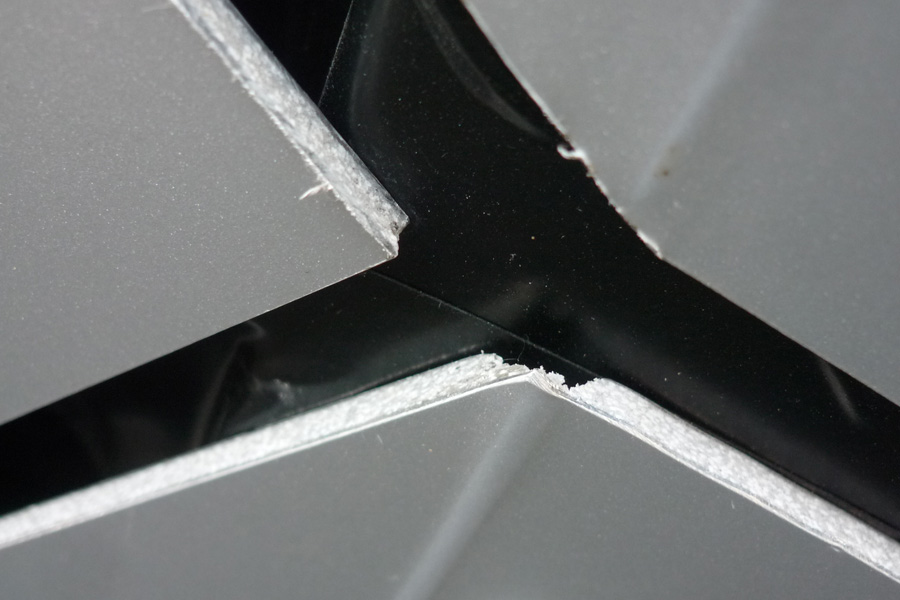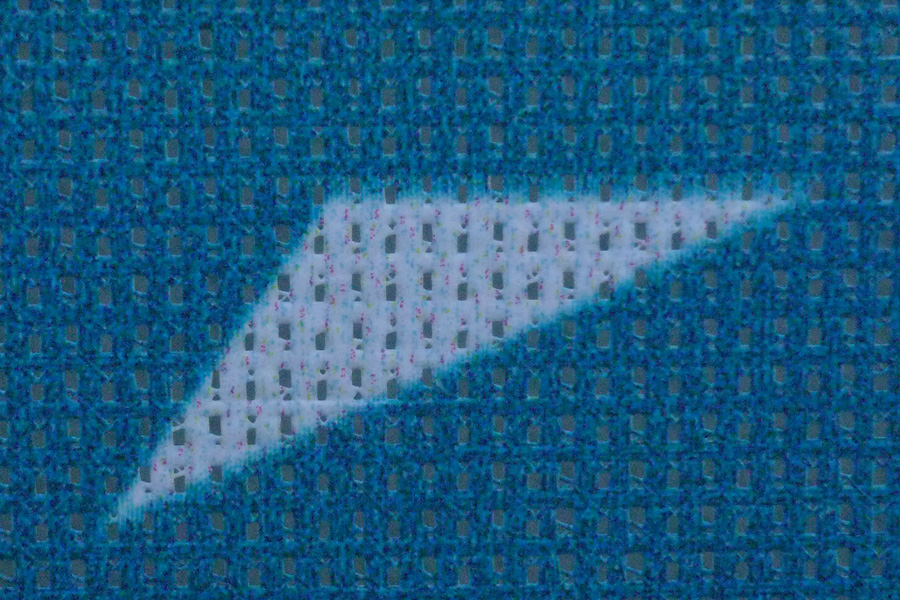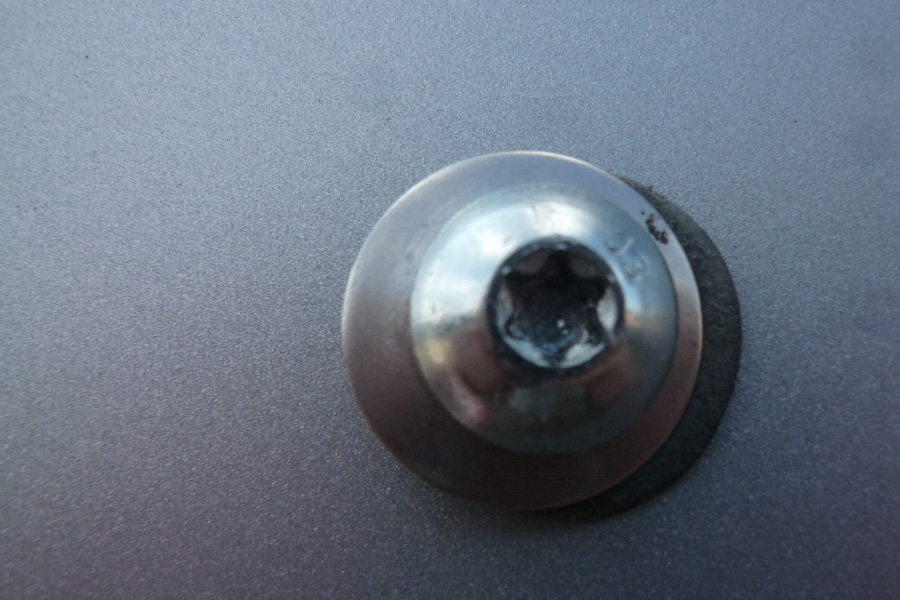High-res Images, Low-res Buildings
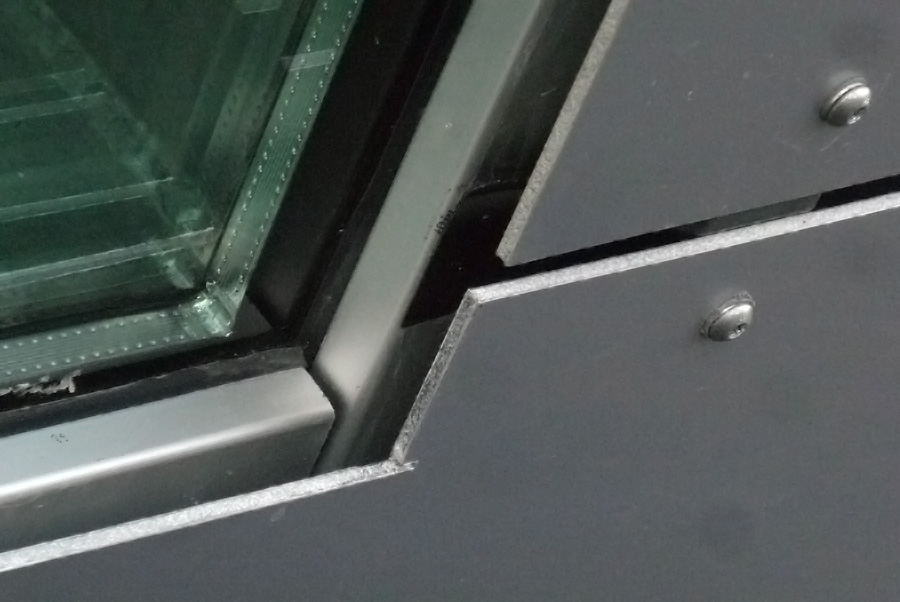 a building at incorrect resolution
a building at incorrect resolution
Had some friends in town, a German-Nigerian couple from Tel Aviv, who had met in Lagos. He’s doing alright running a factory producing custom transformers for the West Bank and Gaza, so they’d asked me which city I’d recommend out of Hong Kong, Tokyo, and Singapore for their trip over last New Year’s. I had quickly picked Hong Kong. I hadn’t been to any of them, but I try to mask my terrible indecisiveness with split second decision making, post-rationalizing and a poker face. They didn’t like Hong Kong. They said it was sterile and bland. What about the 3D character, the elevated free-ways, the escalators soaring past skyscrapers, the hive like shanties full of country folk trying to make it in the big city, I said. Nope, boring, they said, like any other city the world over, today. The shanties are gone, swiftly developed away to ever further fringes by the usual in-your-face brand architectures and architectures of convenience rapidly replacing anything with character and a little bit of dignity, certainly any shanty towns or anything else harboring the unexpected, the uncontrollable, in short, all the stuff the well adjusted consumer abhors and exactly what big cities were once about, organic, creative messiness replaced by retail junk with obsolescence built into it, I snarked into my ridiculously inflated Burgundy bulb.
“Everything today is built for the image. Cities are reduced to locations, for tourists, for tourism ads, and commodity as image. It’s like all these design hotels and culture outlets popping up, all the Foster, MAD or BIG or whatever acronymed OMA franchise or knock-off buildings. Once you walk up to these buildings, it feels like several layers of details and intricacy are missing and all that seeming sophistication from a distance falls apart in an instance. The detail is now in the image, forged in GPUs with multiple pixel shader pipelines, workstations with twin socket quadruple core CPUs and 128 Gigs of RAM, ever faster render engines, with print technology and abseilers that graft terapixels of imagery onto megaposters. Who looks at buildings from close up anymore? You stand in front of the Humboldt Box to look at the Altes Museum, at the Altes Museum to look at the Funkturm, on the Funkturm to look back at the Humboldt Box. You’re not supposed to look at buildings from up close. Surfaces strive for smoothness, nothing’s there to obstruct the flow from location to location and into the souvenir shops. Everything’s being set up for street view or Flickr or Picasa or augmented imagery. The image contains more information than the building. It’s the age of hi-res imagery and low-res buildings!!!”
So I went down to the Humboldt box the next day to test my point and took some macro photos and close-ups. One of the project initiators had recently used the Anglicism “Top-Location” outlining his project’s impending success in a German press release. How great then to still experience the wonderland of analog continuity with plain eye and macro lens and delve in the nitty-gritty of the in-betweens of the discontinuous image raster. Let’s see how it panned out…
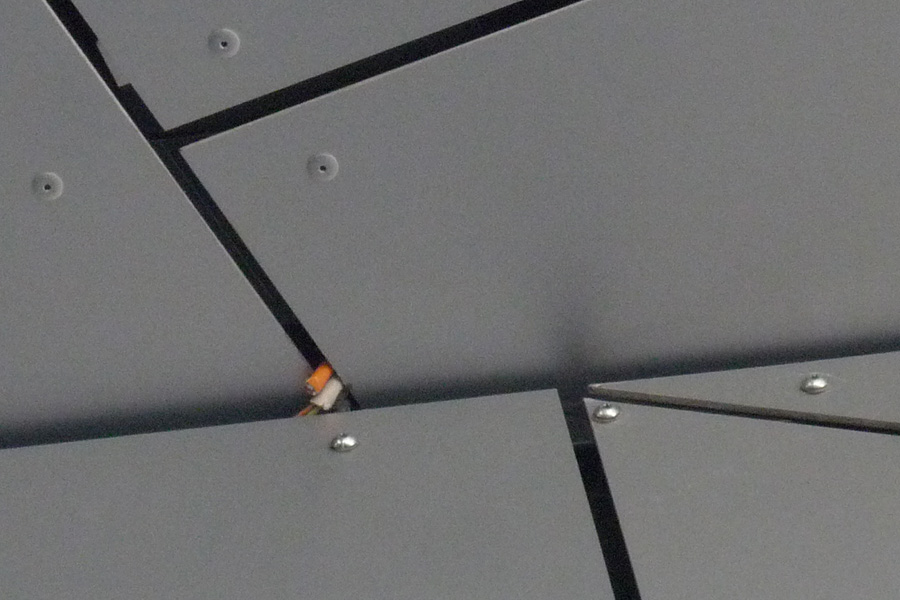 back-off: the image bolted together starts falling apart
back-off: the image bolted together starts falling apart
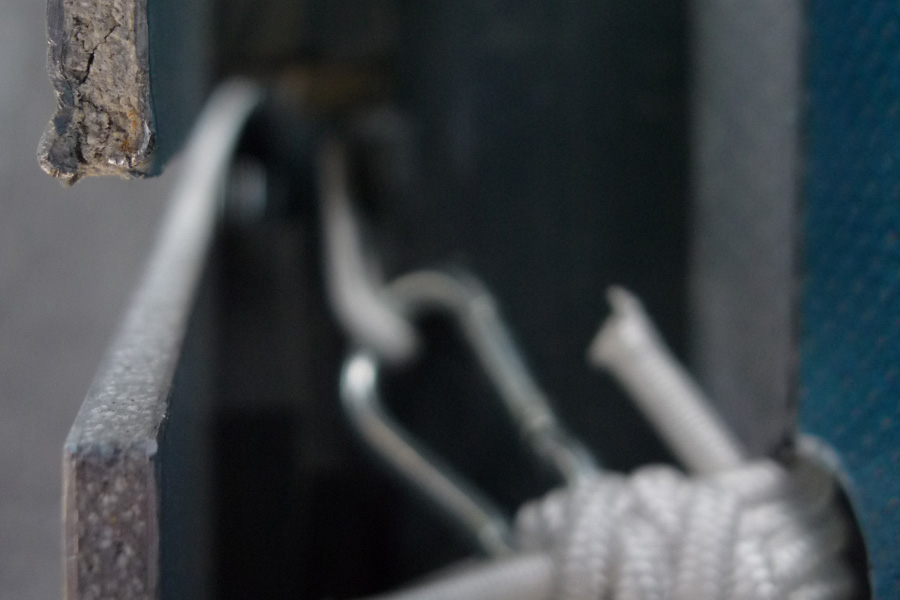 further signs of megaposter progeny
further signs of megaposter progeny
The building which previously served as a prop for hairspray, bikinis, and sandals now advertises so-called high culture, or the absence thereof, the Humboldt Forum, in a classic case of low-high-middle-brow confusion often found in the cultural logic of late capitalism. The Humboldt Box is essentially a folded megaposter, parading a similarly flat message of representation and merely evoking the 3D. In that sense it is not fully three-dimensional, but a sort of relief or pop-up image building with some slapped on applied facing to conceal the detailing that it shares with its true progenitor, the megaposter. Imagery parading as building.
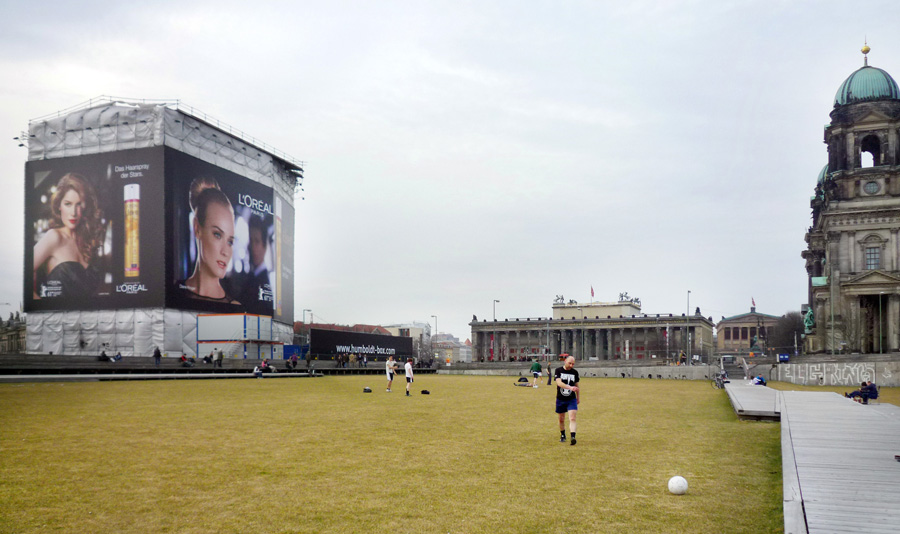 hi-res hairspray iconography – st.diane and st.laetitia
hi-res hairspray iconography – st.diane and st.laetitia
